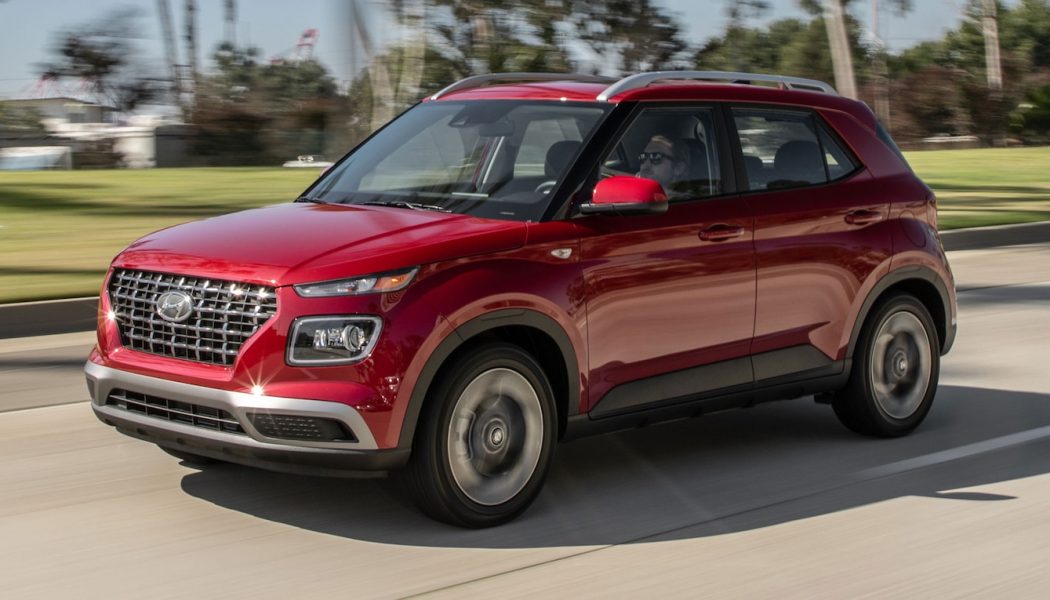It’s hard to put a finger on exactly why driving a car with a manual transmission is so much fun. Is it the control you feel selecting your own gears, that visceral connection formed between human and machine? Is it the satisfaction of knowing you’re doing more work than 90 percent of other drivers on the road? Is it the challenge of gently feathering the clutch with your left foot and modulating the throttle as you creep uphill in bumper-to-bumper traffic with your right, knowing one slip-up could stall your engine and invite ridicule and embarrassment? For the enthusiast, maybe—but for non-enthusiasts wary of the work involved, that last scenario is perhaps most triggering. And Hyundai knows it.
The folks at Hyundai Motor India have come up with a solution to the clutch-pedal problem facing hesitant would-be manual-transmission drivers: Removing the clutch pedal. Hyundai’s India branch recently announced that the Venue subcompact SUV there will launch there with an available intelligent Manual Transmission (iMT), a system that uses a conventional six-speed manual shifter and transmission that just so happens to lack a third pedal for the clutch.
To change gears, grab the shift lever and slot it into the desired gear position as you normally would, except with Hyundai’s system, that’s all you need to do. The iMT uses an “intention sensor,” which detects and predicts when you’re going to shift. That sends a signal to the transmission control unit, which in turn primes a hydraulic actuator for engaging and disengaging the clutch. The six-speed iMT is offered with the 1.0-liter turbocharged three-cylinder engine that’s available in India. The iMT will also be an option on the Indian-market Kia Sonet.
This isn’t the first two-pedal manual transmission. Porsche toyed with the idea in the late 1960s, calling its system “Sportomatic.” Like the iMT, the Sportomatic had a traditional shifter but only four forward gears. The clutch was vacuum-actuated (a microswitch on the shift lever initiated the clutching action), and a torque converter was used in place of a flywheel to keep the engine from stalling when the car was stopped. Volkswagen offered a similar system in the Beetle and Karmann Ghia called Automatic Stickshift, or “Autostick.” Surprisingly, Sportomatic lasted until 1980, but it was never a popular option on the 911 and remains a value-killer among collectors. The key takeaway is this: even though Porsche continued to tinker with automated manuals, it never revisited the Sportomatic’s clutchless stick shift concept.
So why, then, is Hyundai treading a similarly weird path? In a release, the automaker says the iMT will retain the “joy of driving” without the hassle of constantly pressing the clutch pedal in traffic. Having commuted with manual cars for years, we can say clutch foot fatigue is real, but it comes with the territory. Without it, and all the nuances of operating a clutch pedal, are you really driving a manual? We’re skeptical but open to finding out for ourselves. Unfortunately, that would probably require a trip to India as a Hyundai rep tells us there are currently no plans to bring the iMT to the U.S.-market Venue.









![The JIG: Yeezy GAP Engineered By Balenciaga Collection Is Here [Photos]](https://www.wazupnaija.com/wp-content/uploads/2022/02/the-jig-yeezy-gap-engineered-by-balenciaga-collection-is-here-photos-327x219.jpg)
